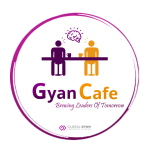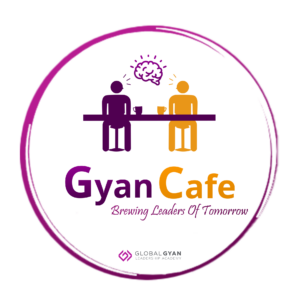The AI Disruption in Professional Services: From Billable Hours to True Value


A post by entrepreneur Greg Isenberg got me thinking. He used an AI tool to draft a simple legal contract in 15 minutes, something that would’ve otherwise cost $2,000 via a law firm. When he sent it to his attorney, the reply two days later was a casual “looks good.” By then, the contract had already been signed.
This anecdote is representative of a broader shift underway. AI is not just a productivity booster – it’s a business model disruptor for professional services. From law to finance, consulting to coaching, and now healthcare, AI is redefining what clients are really paying for, and what professionals should be delivering.
The Pyramid Is Crumbling
For decades, professional services have followed a pyramid structure. At the base: junior associates or analysts doing time-consuming, manual tasks – drafting, reviewing, analyzing, researching. At the top: partners and senior experts delivering strategic advice and client relationships.
AI, of course, attacks the base. Tools can now write contracts, review large volumes of documents, generate financial reports, and even analyze behavioral trends for leadership coaching. In medicine, software platforms and wearables are now taking vitals, interpreting blood reports, detecting irregularities, and flagging health risks – functions that once relied heavily on a GP’s trained eye.
This isn’t just about efficiency. It’s about how future professionals learn. The base of the pyramid wasn’t just cost-effective labor – it was the training ground for the next generation of experts. With AI handling most of the repetitive “learning-by-doing” work, how do we build real judgment in future leaders and professionals?
From Billing Time to Building Value
The current model in most professional services is time-based. You pay a lawyer or consultant by the hour. A doctor is paid per appointment. A coach is compensated per session. But in an AI-enabled world, clients don’t want to pay for time. They want to pay for results.
A client doesn’t care whether a contract took 2 hours or 2 seconds; they care whether it protects them. A patient doesn’t value the 15-minute consultation; they value confidence that their diagnosis is accurate and their concerns are truly heard. An emerging leader doesn’t want six coaching sessions; they want to become more effective.
This means professionals need to stop selling time and start selling outcomes. In healthcare, like in many other sectors, we’re already seeing this shift. Concierge medicine and subscription-based care models are emerging, where patients pay a monthly or annual retainer for ongoing care, access, and peace of mind, not per-visit billing. The physician becomes a long-term partner in wellness, not a transaction-based gatekeeper.
The Real Value of a Professional
AI can diagnose common illnesses. It can draft contracts. It can rebalance portfolios. But what it cannot reliably do – at least not yet – is:
- Catch the rare edge case that defies standard patterns
- Understand the context and emotion behind a patient’s anxiety
- Interpret subtle business dynamics that don’t show up in a spreadsheet
- Provide emotional reassurance, ethical guidance, and long-term trust
As a commenter pointed out in response to Greg’s post, professionals implicitly offer insurance against risk. A lawyer is not just reviewing a contract – they’re protecting against catastrophic liability. A GP isn’t just looking at symptoms – they’re providing a safeguard against misdiagnosis and medical uncertainty. A leadership coach isn’t just giving advice – they’re holding space for reflection and transformation.
That’s the true value. And that’s what must be priced – not the number of hours spent, but the risks absorbed, outcomes delivered, and trust built.
Young Employees Must Be Apprentices, Not Billable Units
With AI taking over the “doing” part of work, young professionals risk being reduced to passive reviewers of AI output. That’s not a recipe for deep learning. We must rethink how we develop talent.
Junior employees should be treated as apprentices – not billable units, but learners. Their job is not just to be efficient, but to build experience for future judgment-heavy roles. This might make them “loss-making” in the short term, but it’s the only way to sustain professional capability in the long run.
Reimagining Learning for Professional Services
Here are some ways to address the on-the-job learning crisis:
Simulated Practice
Create realistic, AI-powered simulation environments (like diagnostic scenarios for doctors or contract reviews for junior lawyers) that allow mistakes, reflection, and feedback.
AI Co-Piloting
Have juniors work alongside AI tools, actively questioning and refining outputs rather than just accepting them. Make it a learning dialogue, not a rubber stamp.
Mentorship, Not Just Management
Experienced professionals must take on the role of teachers – explaining the “why,” not just checking the “what.”
Human-Centric Skills Training
Include empathy, communication, critical thinking, and ethical reasoning as formal parts of professional development. These are the areas where humans still dominate.
Rethink Entry-Level ROI
Firms must accept that apprenticeships are long-term bets. Just like hospitals invest in residents and consulting firms invest in analysts, the next era of firms must build talent pipelines, not just billing machines.
The Business Model Reset
In every field, the shift is clear:
Law: From $750/hour billing to outcome-based pricing and AI-augmented in-house legal teams
Healthcare: From appointment-based billing to subscription models that value continuity, prevention, and trust
Coaching and Consulting: From pre-packaged sessions to impact-focused partnerships measured by behavioral and business change
Final Word
AI is not here to replace professionals. But it is here to force a reckoning with what the professional really offers.
The answer isn’t resistance, nor blind adoption. The answer is reinvention.
Professionals must shift from doing to thinking, from execution to judgment, from transactions to transformation. And the pricing models around them must follow suit.






Responses